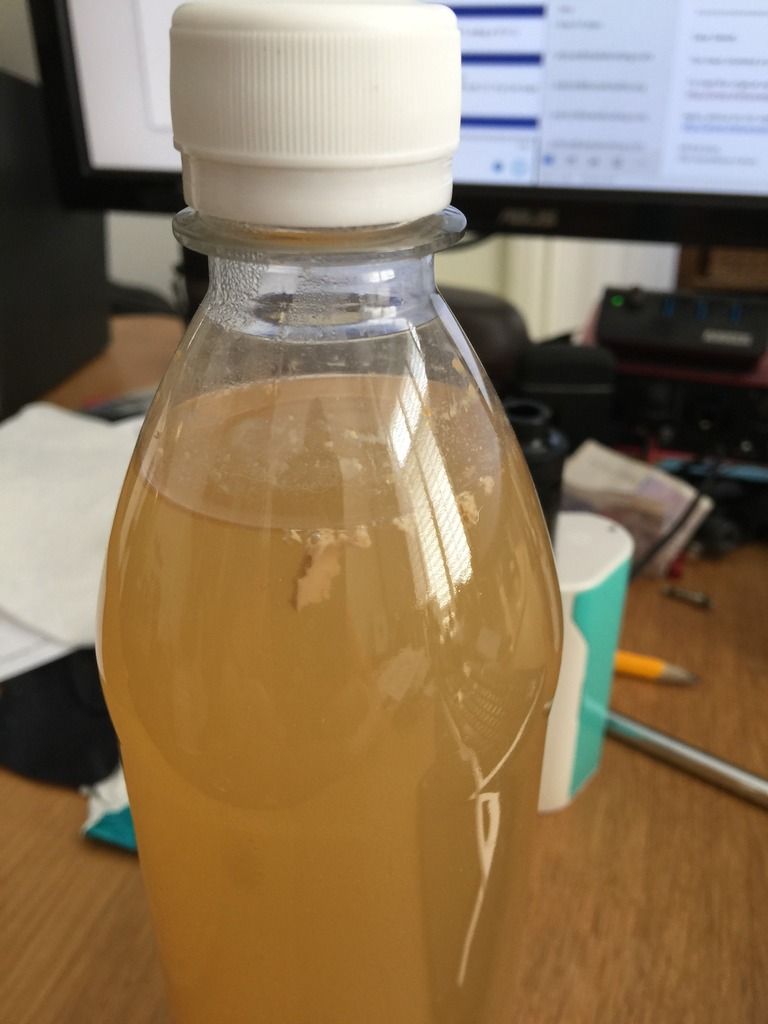Hmmm. Sorry, but more information is needed.
1. What was the recipe?
2. How did you manage to make "non-alcoholic" ginger beer using yeast? (Alcohol and CO2 are the two products of yeast eating sugar.)
I have very few fastidious friends :whistle: but for the delicately minded I guess you could always pour your ginger beer through a sieve or a muslin cloth to catch the lumps.
I make very low-alcohol Bourru which is fermenting wine juice. Bottom fermenting yeasts eliminate surface yeast clumps so it looks better in the glass. You might like to try that as a solution. :thumb:
I'm not commenting about the "Coopers" stuff, but presume it's a "traditional" ginger beer. I make non-alcoholic ginger beer with a yeast (for the government prescribed alcohol abstention days), but don't have clumps of it like in the photo - it all settles to the bottom. So answering from my experience:
1: Water, ginger, sugar (100g per litre), cream of tartar and lemon juice (1/2 lemon per litre).
2: "Non-alcoholic" is perhaps a bit of a fib, but very low alcohol (<1/2%). The yeast (a member of the Saccharomyces family) does indeed produce alcohol, but is intolerant to it and it would kill it. Fortunately it formed a symbiosis with a bacteria that turns the alcohol to acetic acid (vinegar, not in quantities that you can obviously taste).
The bacteria forms the yeast into gelatinous clumps (also known as "bees") but you do get a bit of yeast that seems to be "free-floating" and settles like normal yeast.
Some of the gloopy yeast and bacteria mix (the so-called "ginger beer plant") is saved from each batch to start the next. It can be strained out just using a fine sieve.
You can get the yeast from here if a bit suspicious about the "Coopers" stuff.
http://www.gingerbeerplant.net/. When I was a lad you'd get it from someone down the street, everyone had a "ginger beer plant".
(EDIT: Just to answer what "Terrym" posts next: Ferments in 4-5 days, in bottles for 3-4 days, then into the fridge with it before the bottle explode! Doesn't keep for many weeks. Of course, I might be describing something completely unlike the Coopers stuff?)











































![BREWING THERMOMETER STICKERS ACCURATELY MONITOR FERMENTING BEER & WINE LIQUID TEMPERATURES 5PCS HOME BREW SPIRITS WINE LCD ADHESIVE [US]](https://m.media-amazon.com/images/I/311DDjo2X3L._SL500_.jpg)